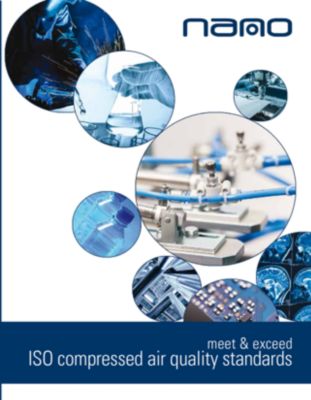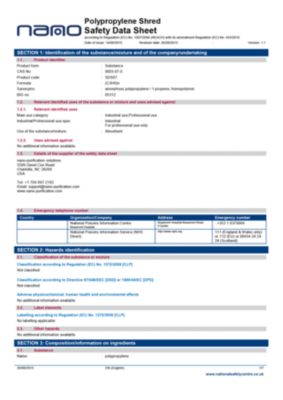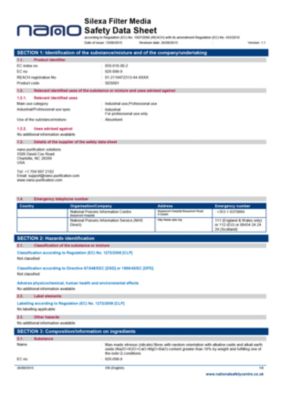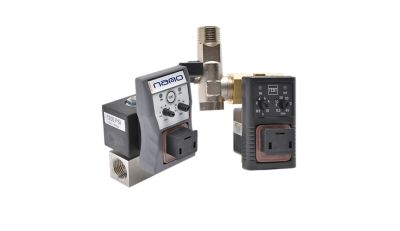Patented and environmentally friendly filtration media attracts oil and repels water and in turn polishes condensate to outlet concentrations down to 5 ppmv
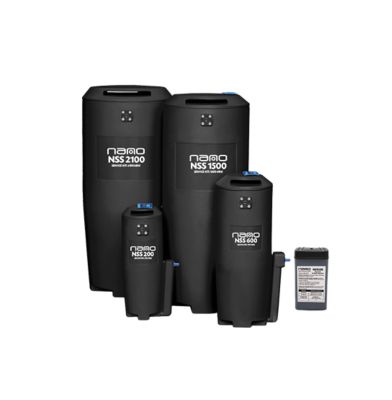
Key Specs:
Flow Rate
102 to 11,893 Nm3/h
Maximum Oil Carryover
<20 ppm
Added feature
Works on all lubricants
Product Documentation
- Brochures
- General Arrangement Drawings
- Material Safety Data Sheets
- Service Guides
- User Guides
- Videos
Features
Activated in seconds by the installing service engineer, standard visual indicator lets you know when service is due on your unit
Turn-key, small footprint package with no pre-soaking of media unlike traditional carbon bags
Specifications of Our Models
Separator Model |
Inlet Connection |
Outlet Connection |
Rated Flow | ||
|---|---|---|---|---|---|
BSPP |
Qty |
BSPP |
Qty |
Nm3/h |
|
NSS 100 |
¼” |
1 |
⅜” |
1 |
102 |
NSS 200 |
½” |
4 |
¾” |
1 |
204 |
NSS 600 |
½” |
4 |
¾” |
1 |
612 |
NSS 1500 |
½” |
4 |
¾” |
1 |
1529 |
NSS 2100 |
½” |
4 |
¾” |
1 |
2124 |
NSS 3000 |
½” |
8 |
¾” |
1 |
3058 |
NSS 4200 |
½” |
8 |
¾” |
1 |
4248 |
NSS 6000 |
¾” |
2 |
¾” |
1 |
5947 |
NSS 12000 |
¾” |
2 |
¾” |
1 |
11893 |
NSS 200 D |
½” |
4 |
¾” |
1 |
204 |
NSS 600 D |
½” |
4 |
¾” |
1 |
612 |
NSS 1500 D |
½” |
4 |
¾” |
1 |
1529 |
NSS 2100 D |
½” |
4 |
¾” |
1 |
2124 |
NSS 3000 D |
½” |
8 |
¾” |
1 |
3058 |
NSS 4200 D |
½” |
8 |
¾” |
1 |
4248 |
Specifications |
NSS 100 |
NSS 200 to 4200 |
NSS 6000 |
NSS 12000 |
|---|---|---|---|---|
Expected media life |
4000 hours |
|||
Maximum oil carryover |
< 20 ppm |
|||
Warranty |
1 year |
2 years |
||
Max condensate inlet pressure |
16 barg |
|||
Inlet condensate temperature range |
2 to 40°C |
|||
(1) This information is for general information purposes only. For additional technical specifications, refer to the product brochure, technical data sheets, and/or user guides. Technical specifications are subject to change.
Frequently Asked Questions
An oil water separator is a device designed to extract oil from condensate generated by compressed air systems. This process guarantees that the water discharged from the system complies with environmental regulations, making it safe for drainage or disposal.
Compressed air systems produce condensate that typically contains oil from compressors. Discharging oily water into the environment without proper treatment can violate environmental laws and harm ecosystems. Separating the oil enables responsible disposal and compliance with regulations such as ISO 14001.
Activated carbon media requires presoaking while Polypropylene does not - saving time and avoiding mess—while offering a significantly higher oil holding capacity than activated carbon. It is also highly selective, absorbing only hydrocarbons without taking in water, and is clean and safe to handle in both environmental and industrial settings.
Not necessarily. Even oil-free compressors can produce condensate that picks up oil from the environment, piping, or other sources. A separator may still be needed depending on your system design and discharge requirements.
The nano NSS range of oil-water separators is designed to handle condensate from compressed air systems efficiently. It employs advanced filtration technology that leverages a unique non-carbon, 100% recycled filtration media. This media is specifically engineered to absorb oil while repelling water effectively, yielding clean condensate that can be disposed of safely and economically. Condensate from various sources, including compressors, refrigerated dryers, and filters, is directed into the NSS separator. Initially, the condensate flows through a primary filter, which depressurises the flow, captures solid contaminants, and utilises an oil-absorbent material to handle bulk hydrocarbons. Following this step, the condensate then travels through a deep bed of STERLING filtration media, which further cleans the water by absorbing any remaining oil, ensuring that the outlet oil concentration is reduced to 5 ppmv or less. The end result is clean water that can be discharged in compliance with environmental regulations.
The outlet oil concentration from a NSS unit is reduced to 5 ppmv or less. If this level meets your local discharge regulations, the water can be disposed of in the sanitary sewer. Always check your local environmental guidelines before discharging.
Sizing a traditional separator typically involves considering various factors, such as condensate flow, ambient conditions, compressor type, oil type, as well as the pressures and temperatures of other equipment. In contrast, NSS oil water separators can be sized quickly and easily based solely on the air or gas flow. The rated flow rates shown for NSS assume an oil-flooded compressor using mineral or synthetic lubricant with a maximum oil carryover of 5 mg/m3 or less. Consult our nano support team for more information.
Yes! Traditional oil-water separators typically depend on settling tanks to allow oil to separate from the condensate mixture. However, many synthetic oils have a specific gravity very similar to water, which makes separation difficult. Additionally, the heat generated during compression and the use of timed solenoid drain valves can further complicate the issue by emulsifying the condensate before it reaches the separator. In contrast, NSS oil-water separators do not rely on a settling tank for this process.
STERLING is an innovative product made from recycled glass bottles. Our unique manufacturing process transforms this reclaimed waste material into a lightweight, easy-to-use, non-flammable, and highly absorbent media that serves as the polishing media.
No, unlike traditional carbon bags, our STERLING media is ready to use straight from the box, without the need for pre-soaking.
The NSS range is both technologically advanced and environmentally friendly. Unlike traditional separators that use carbon, STERLING filter media is made from 100% recycled materials, utilising sustainable manufacturing techniques. Separating your condensate is beneficial for the environment, and using recycled materials to accomplish this makes it even better.
Service intervals vary depending on the unit and the number of hours used. It features a quick-release lid that requires no tools for easy access. There's no settling tank to empty or clean, and no need to pre-soak the media. You can remove the media in under 15 minutes, without needing to empty or clean an oil collection container.
Yes. The service life indicator is activated within seconds by the installing service engineer. The active strip provides a visual indication of the service interval based on time, lasting up to one full year. Each new service kit comes with a fresh indicator set, and an upgrade for retrofitting existing separators is also included in every service kit. This ensures that the feature is also available for older installed NSS separators.
Expected media life of each model is 4000 hours.
Models NSS 100 to NSS 4200 are constructed of moulded plastic.
The prefiltration media is made from polypropylene, with the polishing media constructed of STERLING. Made from recycled glass bottles, our unique manufacturing process has transformed a reclaimed waste material into a lightweight, easy-to-use, non-flammable, super-absorbent spillage media.
Models NSS 6000 & NSS 12000 are modified intermediate bulk containers.
Yes, the range has been tested and approved by the Deutsches Institut fur Bautechnik (DIBt approved (Z-83.5-57).
The cost of NSS is dependent on the size required for your compressed air system.
Wall mounting kits are available for the NSS 200 and NSS 600 models. The NSS 100 units include the wall mounting bracket as standard.
Period: NSS 100: 1 year • Period: NSS 200 to NSS 12000: 2 years
Yes, we do! You can enhance the performance of your old oil water separators by replacing the original carbon bag service kit with NSS's STERLING material. To get started, simply contact us with the model of your oil water separator, and we will provide you with the part number you need to order from your local nano distributor.


